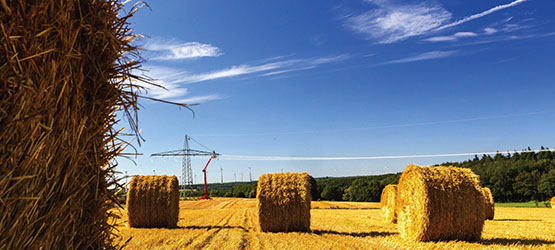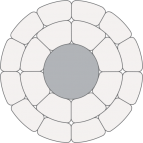When compared to the alternatives, the conductor with the highest cost actually proved to be the most cost-effective solution.
SITUATION

ACCC Oslo for Westnetz Germany
From 2011 to 2012 they started to experience constraints in their electricity grid network. The energy generated by Wind Energy Converters (WECs) in the Hunsrück area, particularly in times of poor load, for example on Sundays with a lot of wind and little consumption, was proving problematic for the existing grid. Furthermore, this was going to be multiplied by 6, when new WECs came on line at the end of 2012.
To process this overload, Westnetz decided to collect the energy generated by the WECs, perhaps using the existing infrastructure and transmit it towards the new 380 – 110 kV– Power Station at Waldlaubersheim.
SUMMARY

ACCC Oslo
- Project GoaI: Find the most cost effective overall solution, OHL would need uprating to 200 MVA Minimise downtime, Reduce losses, and increase efficiency
- Type of Conductor: ACCC® Oslo
- Conductor Length: 80 km
- Voltage: 110 kV
- Energized: 2012
ALTERNATIVES
Three alternatives were explored:
- Re-conductor with HT ACSR 264-AT1/34-A20SA (TAL/Stalum 265/35) with temperatures up to 150°C. However to meet ground clearances, reconstruction of 16 of the 36 towers would be needed, significantly increasing total cost.
- Reconstructing the whole OHL using towers capable of carrying twin bundle circuits of ACSR 264-AL1/34-ST1A. The overall cost was three times higher, including breaking down the existing towers and replacing them with new ones.
- Re-conductor using High Temperature Low Sag (HTLS) Lamifil ACCC® 317/60 (Oslo) with a design temperature of 130°C (1050 A). Only one of the 36 towers would have to be reconstructed. The total cost was similar to option one.
THE SOLUTION – LAMIFIL ACCC® OSLO
In the end option 3 was chosen because of the clear advantages:
- Quick implementation due to lack of the time- intensive building permission process. This became increasingly important as most of the wind farms came on line by the end of 2012.
- Lowest overall project cost and least risk, which could lead to extra costs.
- Losses minimised as ACCC® Oslo has the largest aluminium area of the 3.
- Gain of important operational experience with new technologies.
The project was executed from June 2012 until August 2012. This remarkably short time span was achieved as a direct result of Lamifil’s services offered during installation, like training, Westnetz-specific guidelines and on-site supervision.
CONCLUSION
The reconductoring of the OHL in the Hunsrück area (near Koblenz) with Lamifil ACCC® Oslo was an unprecedented success. With its high strength carbon-
composite core, stranded with trapezoidal shaped aluminium wires, it can sustain temperatures up to 175°C.
The network can cope easily with the overload of energy from the WECs, energy can be stored in stations with a minimum of loss, and the transformation of the grid was completed on time before the wind farms were brought on line.
